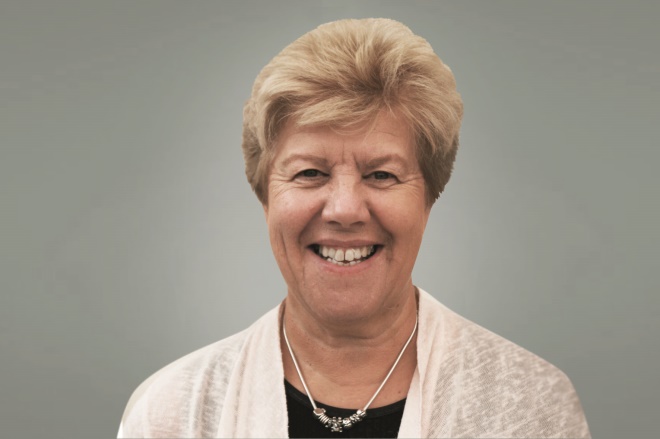
Alex Baker
For 70-year-old retiree Stephen Price, joint pain has had a significant impact on day-to-day life.
Once an avid cook, he now relies mostly on ready meals as the pain and swelling in his thumb joints means he no longer has the dexterity needed to peel or chop vegetables. He also used to enjoy swimming a mile six times per week, but the pain in his shoulder means he can no longer exercise the way he used to.
Price has also experienced major problems with his knee and hip joints, which have required surgery, and says he relies on a topical nonsteroidal anti-inflammatory drug (NSAID) for his painful thumbs and pregabalin for nerve damage in his knee, in order to get to sleep at night.
Like Price, many people will experience joint pain at some point in their lives. For some, the pain will be minor and non-progressive, but for others it could mean giving up activities they enjoy and may even limit their ability to work, resulting in financial hardship and emotional distress[1].
Joint pain is the main symptom of many different musculoskeletal (MSK) conditions, including all types of arthritis, connective tissue disease and osteoporosis[2]. In the UK, the most common joint disease is osteoarthritis (OA) — around a third of people aged 45 years and over (around 8.75 million people), have sought treatment for OA[3].
Pharmacists across primary and secondary care will see patients suffering with joint pain every day. The community pharmacy team will often help patients with joint pain who are seeking advice or analgesics, while specialist hospital pharmacists will deal with the intricacies of conditions such as inflammatory and psoriatic arthritis.
However, there are barriers to pharmacists doing more in this area, including lack of confidence and gaps in knowledge. In Canada, the role of pharmacists in managing joint pain has been more widely acknowledged than in the UK. As such, there may be lessons for UK-based pharmacists looking to take a wider role in the multidisciplinary team in managing joint pain.
Starting local
Ade Williams is a superintendent pharmacist at Bedminster Pharmacy, Bristol. His interest in MSK conditions developed while he was training to become an independent prescriber. His GP mentor, who had a special interest in long-term care and MSK conditions, encouraged him to develop his knowledge in the area.
“[My mentor] wasn’t aware that there were many pharmacists who were involved in managing MSK conditions,” says Williams, adding that, although he expected the role would involve carrying out complex physical examinations, much of his initial training drew on his existing skills.
Intrinsically the core skills of a community pharmacist in this area are in managing the long-term pain that comes with these conditions
“Intrinsically the core skills of a community pharmacist [in this area] are in managing the long-term pain that comes with these conditions — alongside … lifestyle modification and helping navigate the patient to the different specialities that will be involved in their care.”
Williams explains that National Institute for Health and Care Excellence (NICE) guidelines for the diagnosis of OA present “three simple indicators to work with”, without carrying out complicated examinations. If a patient is aged 45 years or over, and has activity-related joint pain and either no morning joint-related stiffness or morning stiffness that lasts no longer than 30 minutes, OA can be diagnosed clinically without further investigation[4].
He says that many pharmacists already have the skills needed to add value to patients managing joint pain, but some of them are not aware that they have competencies in this area.
“For many of the MSK conditions, [it’s about] managing the physical element — the joints and structures involved — but it’s also looking at the right medicines that will help them live and carry on with their normal activities.”
Price is a long-standing patient of Williams and visits the pharmacy regularly each week. At one consultation he expressed concerns about the impact of regular NSAID use and said that because of this he has reduced the amount he takes, despite the fact that it was effective at helping him manage his pain.
“I know [NSAIDs] can be a bit funny can’t it, if you use it a lot, so I try to keep down how much I’m using it … I’ve read up on it and I’ve heard that you shouldn’t do it, and if I go to the doctors they’ll only give it to me for a few days,” he said.
Williams was able to alleviate these worries and informed him that applying a topical NSAID two to three times per day is safe for him to do. He explained to Price that with mechanical joint pain, it is imperative to keep managing the pain and inflammation properly through appropriate use of medicines, and that this can be different for different people. In contrast to Price, Williams says that medication overuse is common among MSK patients, who are often determined to carry on working and maintain their independence.
In contrast to Price, Williams says that medication overuse is common among MSK patients, who are often determined to carry on working and maintain their independence.
“To be accessible and to be able to help with that offers a unique opportunity for community pharmacy,” he says.

Source: Courtesy of Chris Hayes
Chris Hayes, a musculoskeletal physiotherapist, has developed a training package on musculoskeletal conditions for community pharmacists
Chris Hayes, an MSK physiotherapist who has developed a training package on MSK conditions for community pharmacists, agrees that they have a lot to offer to the joint pain management pathway. But, he didn’t always have a close working relationship with pharmacists.
“What traditionally happens with MSK problems is, following a consultation for knee pain, for example, topical gels may be recommended by the physio,” says Hayes. “The patient would then attend a community pharmacy and say, this has been recommended by my physio as part of my programme, and then the pharmacist may phone the physio department and ask for more information.”
However, after completing his independent prescribing course, Hayes became aware that a variety of healthcare professionals, including pharmacists, were keen to learn more about MSK conditions.
“The plan was to generate a training package that was available for whoever wanted it,” explains Hayes.
On the back of this, Hayes set up a programme working with community pharmacists, which started with a chat about what they needed most out of the training.
“Most of the information was on what questions to ask: what symptoms would be very common and what ‘red flag’ questions would be appropriate,” he says.
“The general outcome with an independent prescriber pharmacist is that they would go on to trial a drug and then if things didn’t improve, [refer the patient] to see their GP or to have a referral to physiotherapy via their GP.”
Pain barriers
During his conversations with pharmacists, Hayes became aware of concerns they had when dealing with MSK conditions.
Some of the worries were linked to confidence. Hayes’s programme was therefore designed so that, over a period of three months, the group covered one region of the body every two weeks to increase the pharmacists’ confidence in each area.
“One day we would do the lower limb, then the knee and then the hip. We also covered what people tend to describe with OA joint pain in terms of symptom onset — when it’s worse, when it’s better and things that aggravate it.”
“[We run through] very quick questions that you can ask a patient about the nature of their symptoms and then go on to provide recommendations about management, which could involve referral to a physio, or the pharmacist could then intervene with medication advice.”
During the training programme, Hayes developed important relationships with the pharmacists, which he says was of mutual benefit.
Physios could learn from pharmacists in terms of appropriate use of medicines
“Physios could learn from pharmacists in terms of appropriate use of medicines. A lot of physios don’t have any prior medication knowledge — for example, [they may not know] that over-the-counter ibuprofen could be contraindicated in a patient who has renal problems.”
Although his was a small pilot, Hayes hopes to see the programme extended further since he feels strongly that, as the first healthcare professional many patients see, pharmacists have a “fantastic opportunity” to help patients manage MSK issues.
Learning from overseas
In Canada, the role of pharmacists in OA and joint pain is expanding, and research conducted in Canadian pharmacies has shown that pharmacists can effectively screen and improve outcomes for patients with OA[5].
However, Canadian pharmacists face similar barriers to those in the UK when expanding their scope in this area.

Source: Courtesy of Jason Kielly
Jason Kielly, a researcher and pharmacist based in Canada, points out that pharmacists’ working conditions must allow them to incorporate expanded activities into their daily practice.
“The major barriers seem to be lack of confidence or training, time and reimbursement, and concerns about liability,” explains Jason Kielly, a researcher at the Memorial University of Newfoundland, and clinical pharmacist on the Rheumatic Health Program at Eastern Health, both in Canada.
“Expanded scope for pharmacists is great, but the pharmacists’ working conditions must allow them to incorporate these activities into their daily practice.
“Right now I think there is a disconnect there, in that we are asking and giving permission for community pharmacists to do more and more, but their work environment is not changing to allow for this to happen in a positive and productive way.”
The evidence base
Kielly is part of a research group that is looking into the uptake of expanded scope activities within the province of Newfoundland and Labrador. In 2017, he led the development of practice guidelines for pharmacists on the management of OA, with the aim of filling a gap in both the care of patients with OA and the research to support the positive impact of pharmacist-managed OA care.
The goal was to provide pharmacists with a tool they could use in practice that highlights the most relevant aspects of OA care, Kielly explains[5].
Evidence tells us that patients with OA often do not seek medical attention, but instead self-treat
“Evidence tells us that patients with OA often do not seek medical attention, but instead self-treat,” he says.
“First-line agents to treat OA-related joint pain are available without a prescription and are commonly recommended by pharmacists, where appropriate, to manage joint pain in the community setting.
“Certainly this is a common scenario in a typical community pharmacy practice, but likely not what one would consider ‘management’.”
Kielly adds that with the high prevalence of OA and joint pain across Canada, there is potential for pharmacists to develop niche or specialised management practices, including screening, recommending therapy where appropriate, and following up with patients to ensure continued safety and efficacy.
In the case of Price, Williams has recommended that he undergo a renal check to ensure his kidneys are working efficiently and to check that there are no problems associated with his use of NSAIDs. He has also suggested that Price could try other, stronger over-the-counter medicines, if he felt his current medicines were not working effectively.
The topic of weight loss was also broached with Price by Williams as a way of helping to reduce the load on his joints, increase his mobility and aid pain relief, as well as helping him to manage his diabetes.

Source: Courtesy of Krysia Dziedzic
Krysia Dziedzic, Versus Arthritis (formerly Arthritis Research UK) professor of musculoskeletal therapies and a physiotherapist, says it is becoming ever clearer that when properly equipped with the right information, of which pharmacy can be a significant source, patients can effectively manage their own joint pain.
Krysia Dziedzic, Versus Arthritis (formerly Arthritis Research UK) professor of MSK therapies in the primary care centre at Keele University and a physiotherapist by training, has shown that pharmacists can have an important role in the management of joint pain.
In one trial looking into knee pain presenting in primary care, patients were allocated to either a physiotherapy package of treatment or to consult a pharmacist about their pain medicines[6].
The physiotherapy/pharmacy intervention was then compared with routine primary care, comprising an initial consultation with a GP and a follow-up call.
For pain and, to a lesser extent, functioning, both physio and pharmacy showed benefits over and above what was given by the GP
“For pain and, to a lesser extent, functioning, both physio and pharmacy showed benefits over and above what was given by the GP,” says Dziedzic.
She explains that the pharmacy intervention involved the pharmacist discussing the different medicines the patient was taking and potentially reducing the amount to ensure they were taking the smallest dose for the shortest time, as recommended by NICE.
“Obviously, physiotherapy has a more direct impact on the knee joint and outcomes but pharmacy also showed a reduction in the use of anti-inflammatories for pain and more appropriate use of medication.”
Dziedzic recalls a telephone call from the daughter of one of the participants, who spoke about one of the pharmacists in the trial and told her that “everyone should have this person in their life — it made such impact”.
“I suspect that … giving somebody time, listening to their problems and thinking how they might support their self-management — the softer consultation skills — also [have] an impact on the consultation,” says Dziedzic.
Self-care
Dziedzic says it is becoming ever clearer that when properly equipped with the right information, of which pharmacy can be a significant source, patients can effectively manage their own joint pain.
“What we know is that patients will present [to a healthcare professional] with their problem at one point of time — that might be their worst point — and you only have a short amount of time to support that person because the rest of the time they’re managing [it] on their own.”
However, healthcare professionals need to be communicating the same message, says Dziedzic.
“If everyone has a similar understanding of the condition, then we can all support each other and the patient gets consistent messages. They’re not getting, ‘Oh you must exercise’ from one and ‘You must rest’ from another.”
Dziedzic refers to an OA guidebook for patients, developed by researchers at Keele University in collaboration with patients[7].
“The content is there to inform people on how they can positively support themselves with their joint pain and it aligns very well to NICE guidelines. So … by giving out the guidebook, or talking about elements in the book, pharmacists will be following NICE recommendations.”
Kielly agrees and says that patient education is a simple, non-pharmacological option that is supported by evidence.
Pharmacists can play an important role here in providing patients with information about OA but by also referring patients to patient education programmes
“Pharmacists can play an important role here in providing patients with information about OA but by also referring patients to patient education programmes.
“In Canada, the Arthritis Society offers wonderful education programmes for people living with arthritis.
“While a healthcare practitioner can stress the need for treatment, exercise, weight loss, et cetera, in the management of OA, often we do not have the perspective of knowing exactly what the patient is going through.”
Dziedzic believes that more research should be carried out into the role of pharmacists in joint pain management and says that researchers in the primary care sciences are working with pharmacists and are looking to design interventions with them.
She quotes Lawrence Green, an American public health education specialist: “If you want more evidence-based practice you need to have more practice-based evidence”.
Williams explains that, for Price, his initial lack of self-care knowledge compounded his pain symptoms, but self-care advice from the pharmacy and an ongoing management plan has helped him significantly.
“He values the reassuring easy access community pharmacy provides,” says Williams.
Next steps
Pharmacists clearly have an important role to play in the management of joint pain and in supporting patients such as Price with their day-to-day pain relief; however, as with many areas of extended scope for pharmacists, this needs to be recognised more widely.
But it is not just up to the pharmacists to make the change.
Hayes says that it would be helpful for pharmacists to be able to have a direct referral pathway to physiotherapy, since the traditional route into NHS physiotherapy services is via GP or nurse practitioners.
“Local commissioning groups would need to have a budget or a service design that would allow this,” he explains.
“[While] it may not necessarily increase referral rates, it would stop referrals going through the GP, which would free up their time to see other medical-related problems and [enable] a direct pharmacy to physio relationship, which would be great,” adds Hayes.
“There is a need to become a bit more ambitious,” says Williams, who helps provide links between physiotherapists and his patients if, like Price, they continue to struggle.
“I don’t know of any pharmacists that have all the knowledge and can signpost effectively. There is a need to integrate us better into the multidisciplinary team in this area.”
Williams says that pharmacists need to understand that managing joint pain does not have to be a specialist area, which is something he did not realise until he developed his own interest in it.
“There is now much more need for us to step up here and say we need to be providing better care.”
Panel: Specialist joint pain services

Source: Courtesy of Hilary McKee
Hilary McKee, a consultant pharmacist working in rheumatology and the care of older people, provides pharmacological and non-pharmacological interventions in the rheumatology clinics she runs.
As a consultant pharmacist working in rheumatology and the care of older people, Hilary McKee understands more than most the impact of joint pain on quality of life.
In the rheumatology clinics she runs four times a week, the interventions she provides are both pharmacological and non-pharmacological.
“If it’s mechanical joint pain, there isn’t much we can do with medicines other than offer analgesia, so we might refer to other specialities, such as occupational health for joint splinting, physiotherapy, or to podiatry,” explains McKee. Sometimes osteoarthritic joints have progressed to the stage where surgical referral is the only option.
“For the inflammatory conditions, for example, rheumatoid arthritis, we have a bigger armoury of drugs — disease-modifying anti-rheumatic drugs (DMARDs) plus or minus anti-inflammatories and then progression to biologics.”
However, another part of her role involves talking with and counselling patients, and initiating non-pharmacological interventions, such as exercise, the value of which, she says, cannot be underestimated.
“We try to encourage patients to exercise as much as they are able to and very often we’ll refer them for weight loss, particularly the arthritic patients, as the extra weight puts more pressure on the joints.”
In addition, some of the drugs she prescribes, particularly the DMARDs, are associated with significant side effects.
“I’ve had patients who need a lot of counselling before they’ll even go on to DMARDs because they look at the patient information leaflet and say ‘I’m not taking that — that’s poison’.”
McKee has seen real progress in rheumatology care in the 20 years since she started as a rheumatology pharmacist.
“The service was mostly inpatient-based, sometimes people came in just for joint injections. Since biologics came in, it has evolved to a mostly outpatient service — nearly all patients come to the clinics.
“The whole array of drugs that we have has changed. The whole way of treatment has changed — very much for the better.”
The role of pharmacists has also changed — for a long time when McKee started out she was the only specialist rheumatology pharmacist in the UK.
“There are a lot more rheumatology pharmacists now, with some undertaking patient-facing roles, and it is more recognised [as a career], but for a long time it was a very unique role.”
Citation:
The Pharmaceutical Journal, February 2019, online. DOI: 10.1211/PJ.2019.20205795
References
[1] Kingsbury S, Gross H, Isherwood G et al. Osteoarthritis in Europe: impact on health status, work productivity and use of pharmacotherapies in five European countries. Rheumatology 2014;53(5):937–947. doi: 10.1093/rheumatology/ket463
[2] Dickson J. Promoting self-care of joint pain. Pharm J 2006;277:285. Available at: https://www.pharmaceutical-journal.com/libres/pdf/cpd/pj_20060902_jointpain.pdf (accessed February 2019)
[3] Versus Arthritis (formerly Arthritis Research UK). Osteoarthritis in general practice. Available at: http://www.arthritisresearchuk.org/arthritis-information/data-and-statistics/~/media/EFAEFCE432734F3AA5FB1C64329E02D1.ashx (accessed February 2019)
[4] National Institute for Health and Care Excellence. Clinical guideline - Osteoarthritis: care and management. Available at: https://www.nice.org.uk/guidance/cg177/chapter/1-Recommendations#diagnosis-2 (accessed February 2019)
[5] Kielly J, Davis E & Marra C. Practice guidelines for pharmacists: the management of osteoarthritis. Can Pharm J 2017;150(3):156–168. doi: 10.1177/1715163517702168
[6] Hay E, Foster N, Thomas E et al. Effectiveness of community physiotherapy and enhanced pharmacy review for knee pain in people aged over 55 presenting to primary care: pragmatic randomised trial. BMJ 2006;333(7576):995. doi: 10.1136/bmj.38977.590752.0B
[7] Arthritis UK, Keele University Primary Care Centre. A guide for people who have osteoarthritis. Available at: https://www.arthritisresearchuk.org/~/media/Files/Arthritis-information/Additional-items/OA%20Guidebook%202015.ashx?la=en (accessed February 2019)



